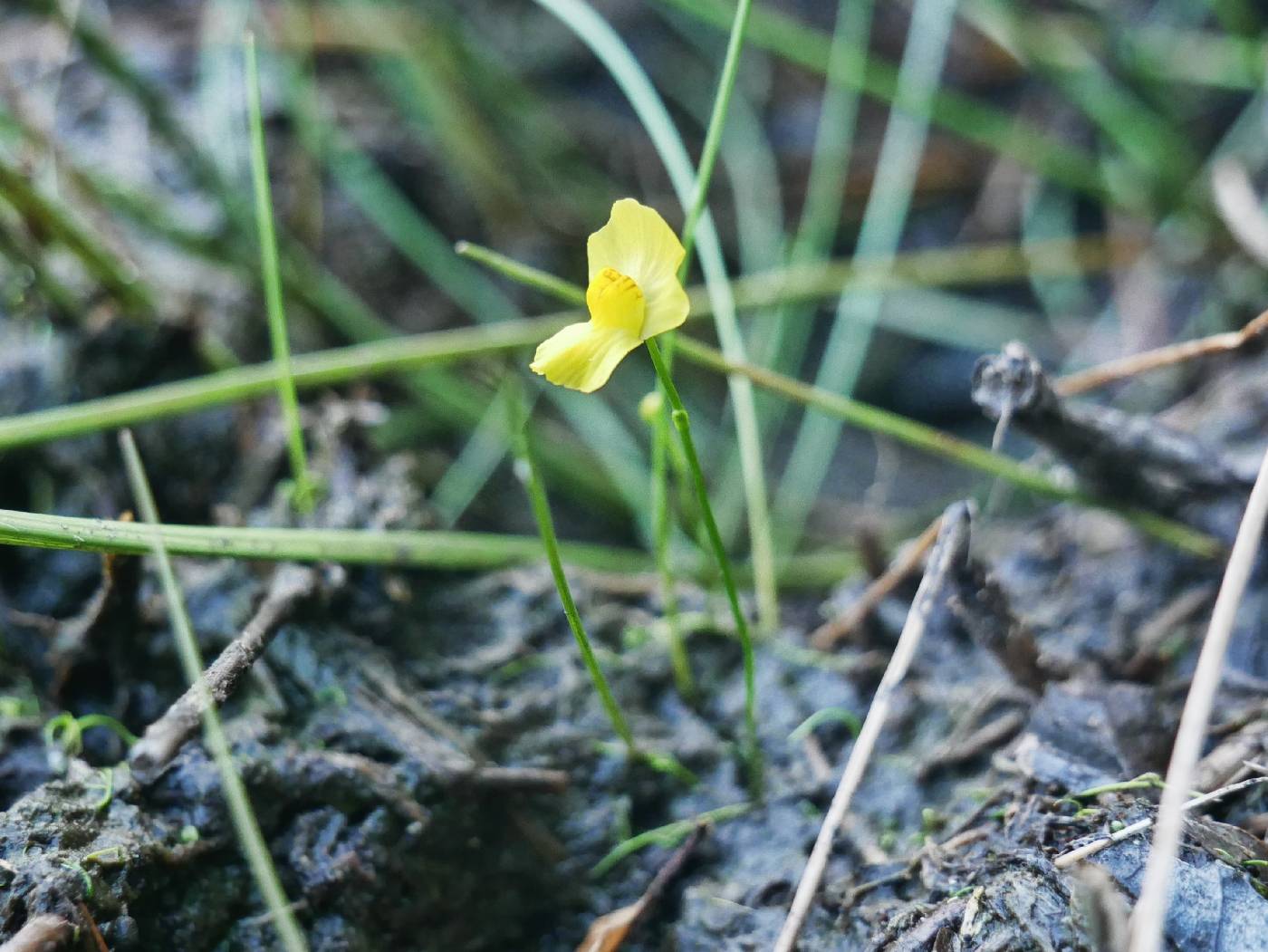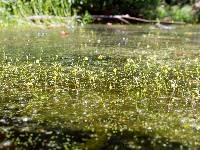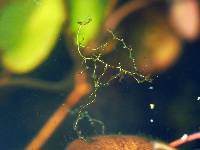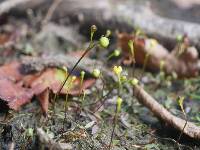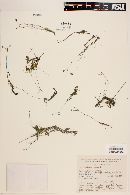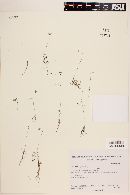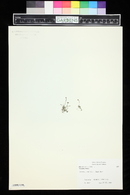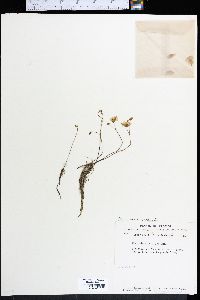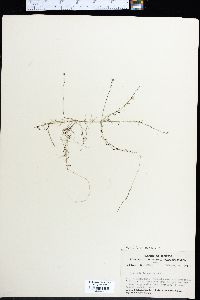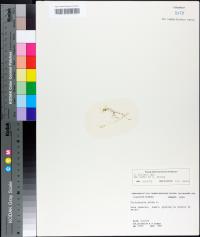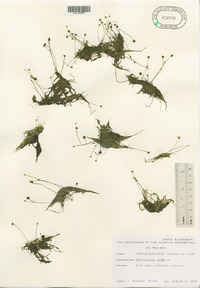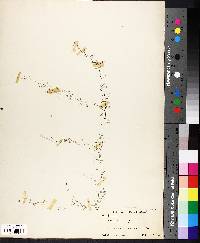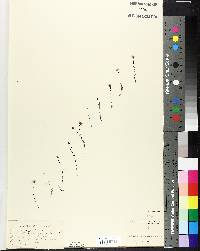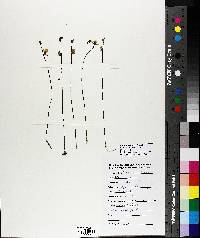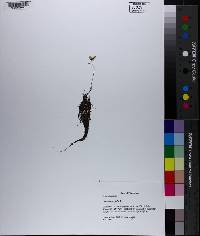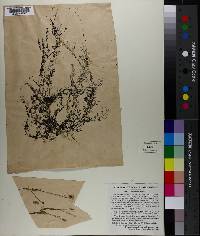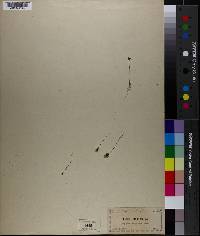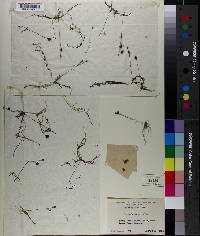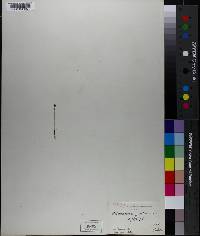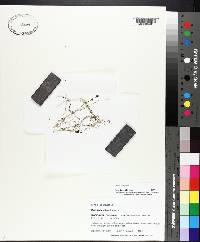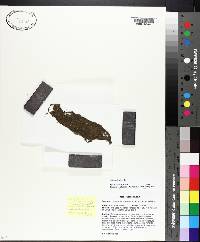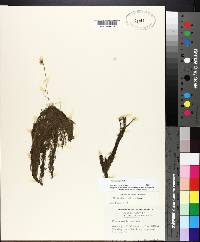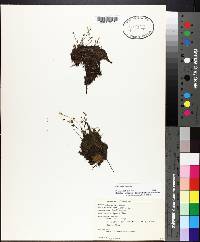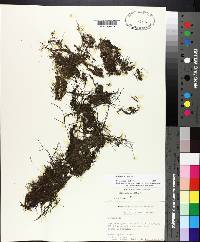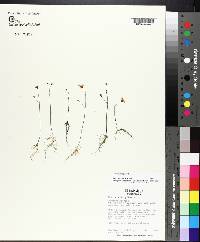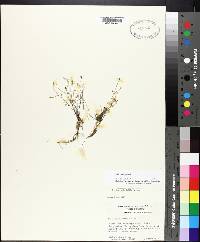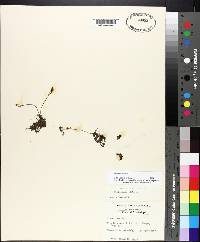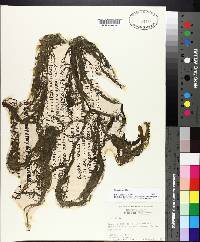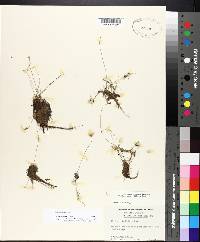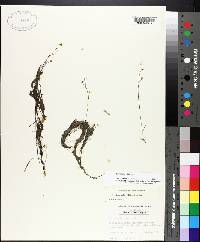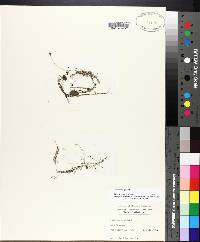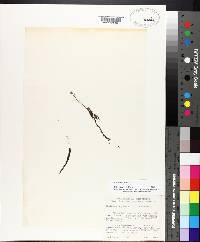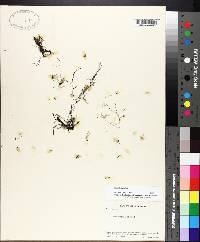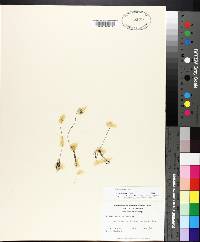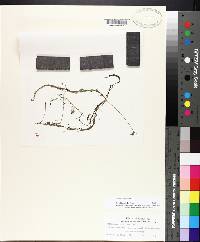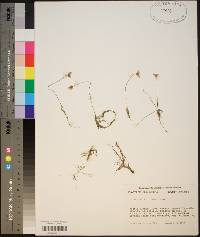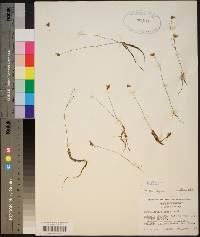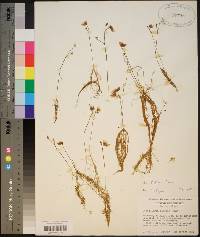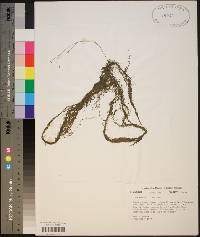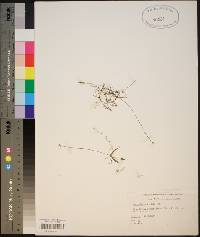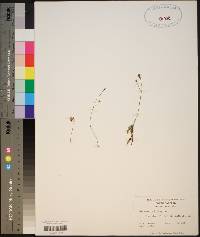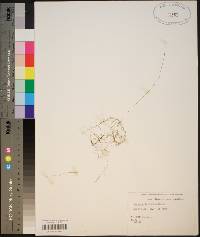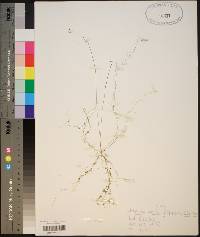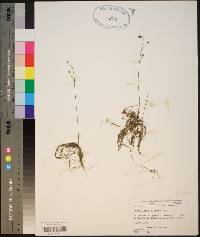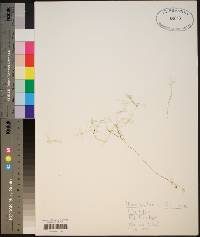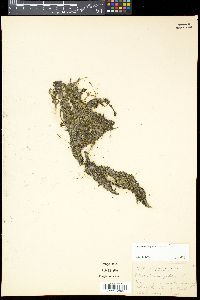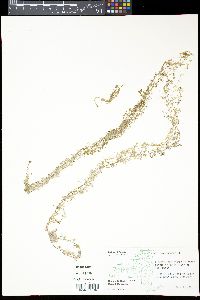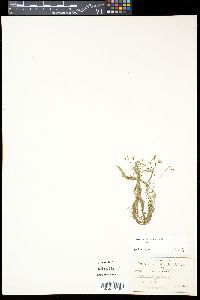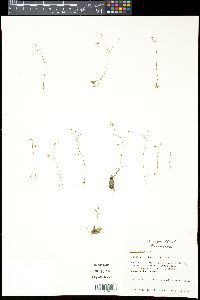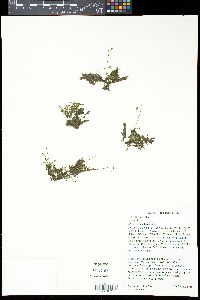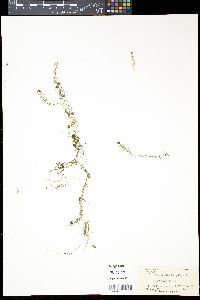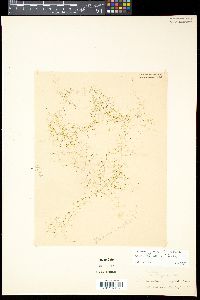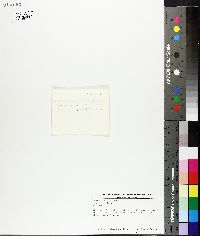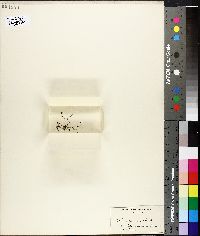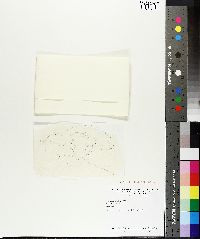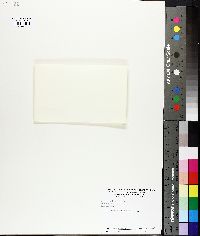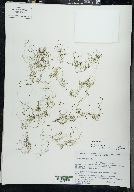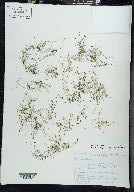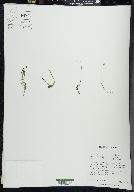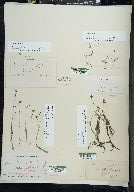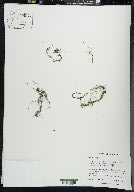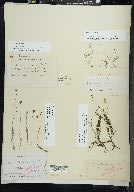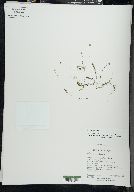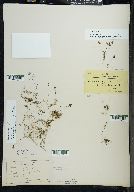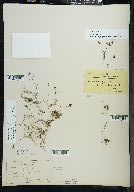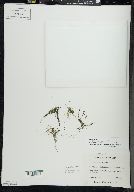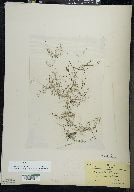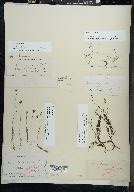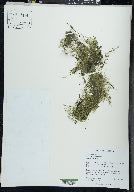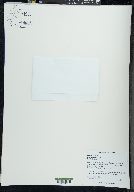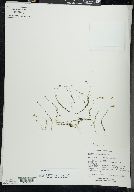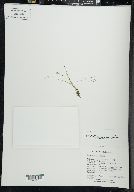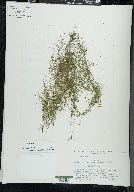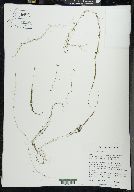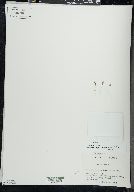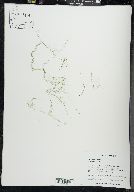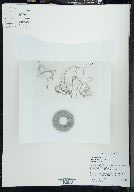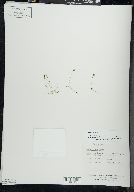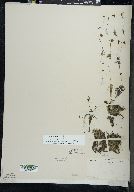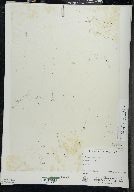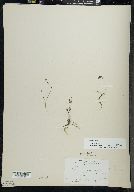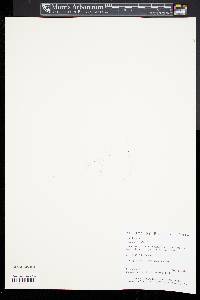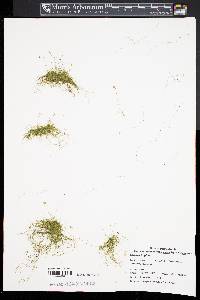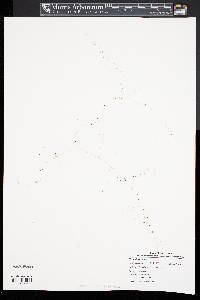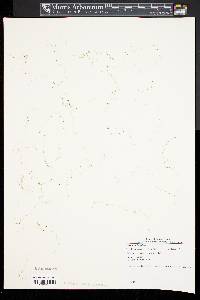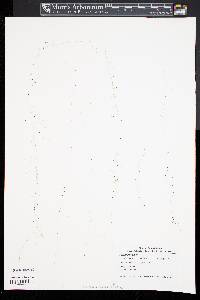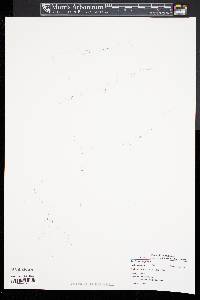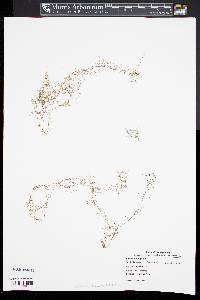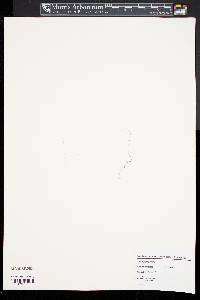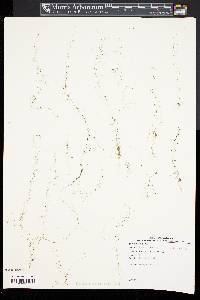Utricularia gibba
|
|
|
|
Family: Lentibulariaceae
Humped Bladderwort
[Utricularia ambigua A. DC., moreUtricularia bifidocalcar R.D. Good, Utricularia biflora Hayata, Utricularia bipartita Elliott, Utricularia emarginata , Utricularia fibrosa Walter, Utricularia gibba subsp. exoleta (R. Br.) P. Taylor, Utricularia gracilis Kunth, Utricularia kalmaloensis A. Chev., Utricularia longirostris , Utricularia macrorhyncha , Utricularia obtusa Sw., Utricularia parkeriana A. DC., Utricularia pumila Benj., Utricularia riccioides A. Chev., Utricularia secunda Benj., Utricularia spirandra Wright ex Griseb., Utricularia tricrenata Baker ex Hiern] |
Annual or perennial herb 5 - 10 cm tall Stem: delicate, rarely longer than 10 cm, creeping and mat-forming. Leaves: submersed, less than 0.5 cm long, usually single-forked (sometimes two), circular in cross-section, with a few bladders less than 2 mm across on the leaf segments. The leafy branches form tangled mats below the water surface. Flowers: borne one to three on a stalk (scape) less than 1 mm thick, yellow petals are two-lipped with upper lip and lower lip about the same size (5 - 6 mm long) and a rounded projection in the center. The spur (extended sac at base of petals) is thick, half as long as lower lip, and blunt to rounded at the tip. Fruit: a two-valved capsule containing small seeds. Similar species: Utricularia radiata, Utricularia intermedia, Utricularia minor, Utricularia macrorhiza, and Utricularia geminiscapa are other aquatic or amphibious Utricularia species with dissected leaves. The flower stalk of Utricularia radiata has a whorl of leaves with inflated petioles. Utricularia intermedia and U. minor have flat leaf divisions. Utricularia macrorhiza has flower stalks that are thicker than 1 mm, inflorescences with more than four flowers, and leaves with bladders larger than 2 mm across. Utricularia geminiscapa rarely has emersed flower stalks with flowers that open (chasmogamous), but often has submersed non-opening flowers (cleistogamous). It also forms a fine mass of floating leaves. Flowering: early July to mid September Habitat and ecology: Rare in ponds, muck flats, bogs, low swales, and along shores of lakes. Occurence in the Chicago region: native Etymology: Utricularia comes from the Latin word utriculus, meaning "a small bottle."This refers to the insect-trapping bladders on the leaves and runners of the bladderworts. Gibba means swollen. Author: The Morton Arboretum Creeping stems delicate, seldom over 10 cm, forming mats near the bottom in shallow water; lvs scattered, rarely over 5 mm, commonly once (twice) forked, with a few bladders; flowering branches 5-10 cm, with 1-3 yellow fls 5-6 mm; palate prominent; spur very thick and obtuse, only ca half as long as the lower lip. Shallow water; Que. to Wis., s. to Fla. and La.; also Pacific states, W.I., and c. Amer. Gleason, Henry A. & Cronquist, Arthur J. 1991. Manual of vascular plants of northeastern United States and adjacent Canada. lxxv + 910 pp. ©The New York Botanical Garden. All rights reserved. Used by permission. Much like no. 13 [Utricularia fibrosa Walter]; vegetative stems all alike; lvs very delicate, rarely over 5 mm, usually twice-forked; flowering branches 5-12 cm; pedicels to 15 mm; fls 1-4. Shallow water on the coastal plain; e. Mass. to Fla. and Tex., n. to Okla. July, Aug. Gleason, Henry A. & Cronquist, Arthur J. 1991. Manual of vascular plants of northeastern United States and adjacent Canada. lxxv + 910 pp. ©The New York Botanical Garden. All rights reserved. Used by permission. Stems creeping and forming tangled mats near the bottom in shallow water, radiating from the base of the scape, dimorphic, some with rather crowded, thrice-forked, bladderless lvs to 15 mm, the others with smaller, twice-forked lvs bearing numerous bladders; flowering branches 1.5-4 dm, with 2-6 long-pediceled fls; cor yellow, the lower lip 8-10 mm, with prominent palate; spur equaling or slightly exceeding the lip. Shallow ponds on the coastal plain; e. Mass. to Fla. and Tex., n. in the interior to Ark. and Okla. June-Aug. (U. pumila) Gleason, Henry A. & Cronquist, Arthur J. 1991. Manual of vascular plants of northeastern United States and adjacent Canada. lxxv + 910 pp. ©The New York Botanical Garden. All rights reserved. Used by permission. From Flora of Indiana (1940) by Charles C. Deam This is a small species usually found on the wet sandy or mucky borders of lakes and sloughs. A few years after the highway was built around Bass Lake, Starke County, I found this species and Utricularia resupinata by the thousands in the bottom of the moist, sandy roadside ditch. It was no doubt frequent throughout the lake area before it was drained, and rare elsewhere. …… Indiana Coefficient of Conservatism: C = 4 Wetland Indicator Status: OBL |

